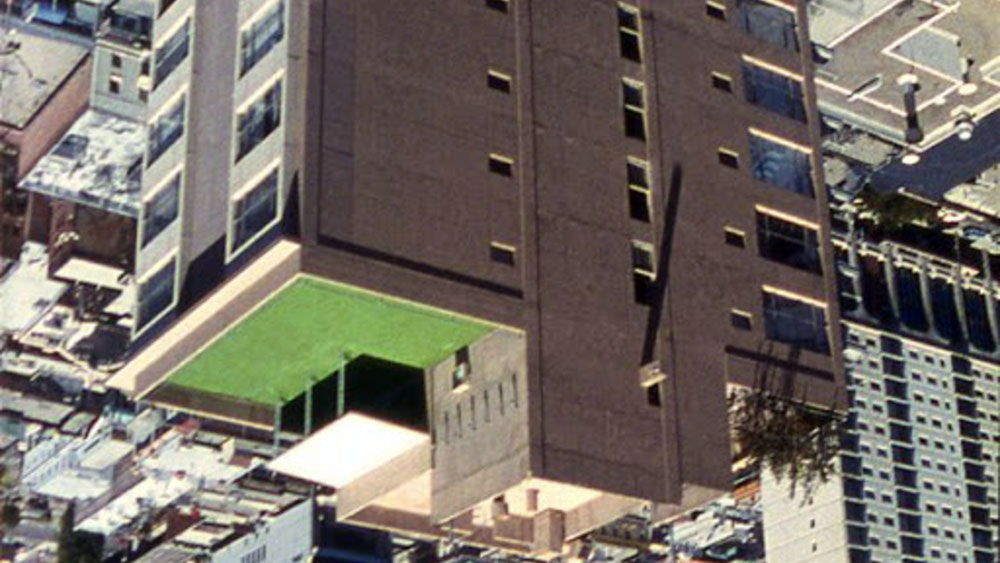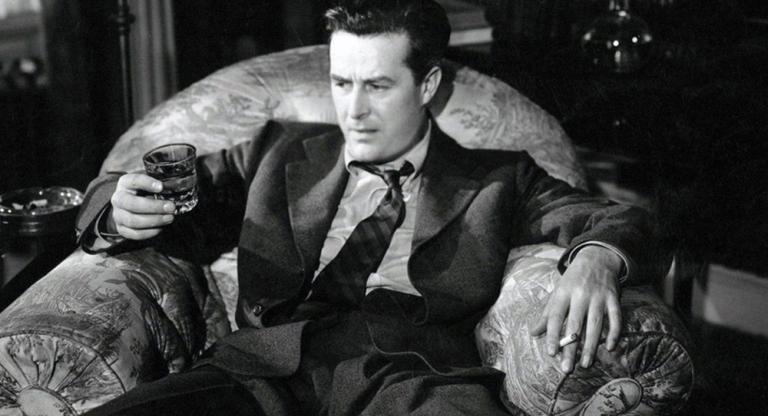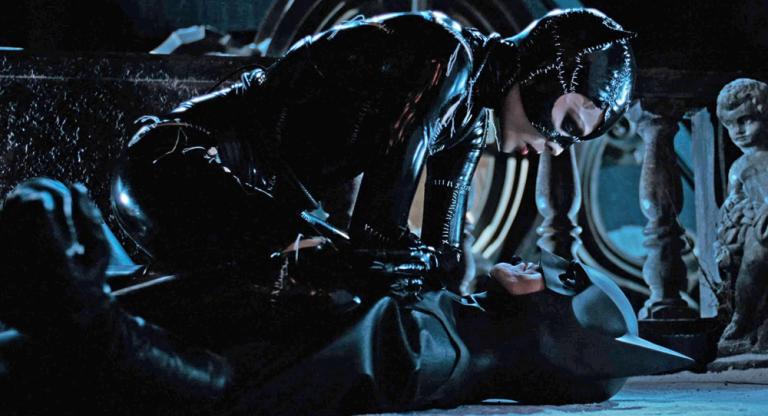We go up, then we go down. Then up again. Then down again. This cycle repeats 12 times across 25 shots, each about 90 seconds long. We ride the glass-enclosed elevator of San Francisco’s Fairmont Hotel, where Ernie Gehr, after being denied permission to film during the coveted window of 12:00 to 1:30 p.m. (he was told his presence might interfere with the lunchtime rush), snuck in a Bolex beneath his raincoat and shot handheld, without the aid of a tripod. He was kicked out a few more times but persisted. Like many great avant-garde filmmakers, Gehr made the seemingly impossible happen with minimal resources at his disposal.
This is the structural framework of Side/Walk/Shuttle (1992), often categorized under tidy “formalist” labels frequently affixed to Gehr’s 16mm output. But the film is equally invested in other disciplines—architecture being the most prominent—as well as city planning and cultural memory. The Fairmont, a registered landmark, has appeared in several commercial features, including Vertigo (which, as many have observed, would be a fitting title for Gehr’s film, if it weren’t already taken), and sits near the site where Eadweard Muybridge captured his panoramic photographs of the city. When I spoke with Gehr last year, he described each take of the film as “another panorama” of sorts. “It’s not just ‘we go this way and that,’” he told me.
Gehr’s shots are tilted, upside-down, sideways, or, by the end, seen from an extreme bird’s-eye view. He takes objects with defined, recognizable and conventional meanings—buildings, transportation, people—and strips them of their immediate, indexical qualities, turning them into fragmented abstract forms in the process. Even beyond all that theoretical mumbo jumbo, Side/Walk/Shuttle remains a major achievement for how effectively it positions the viewer to be actively aware of what they are seeing, and how they process it both mentally and physically—something commercial cinema rarely ever permits. The kinesthetic sensation of being slowly pushed and pulled, one way and then another, is undeniable—like a roller coaster simulation and a Cubist exhibition fused into one. To paraphrase the filmmaker and critic Fred Camper, a great experimental film teaches you how to watch it in real time, and Side/Walk/Shuttle does just that. It gradually draws you into its visual rhythm with creeping pans until your sense of space and orientation is completely reconfigured. If anything, the moment-to-moment question of “What am I even looking at now?” becomes part of the fun.
Adding to all this is the film’s soundtrack: tape recordings Gehr gathered while traveling. We hear noise from New York City, London, and Berlin—crowds hustling, men singing to themselves, lunch-counter chatter—but none from the city we’ve spent over 40 minutes observing. The effect suggests that while the film’s circumstances are rooted in specific, overlapping contexts, there’s something universal about steel beams and ambient conversations—echoes of urban life that transcend any one location. No matter where we are—whether we’re going up or down, or someplace in between—the sights and sounds of city life remain oddly, intimately familiar.
Side/Walk/Shuttle screens this evening, April 28, at Anthology Film Archives on 16mm as part of the series “Tom Gunning + Ernie Gehr.” It will be accompanied by Untitled 1977, Rear Window, and This Side of Paradise. Both Gunning and Gehr will be in attendance for a post-screening conversation.



